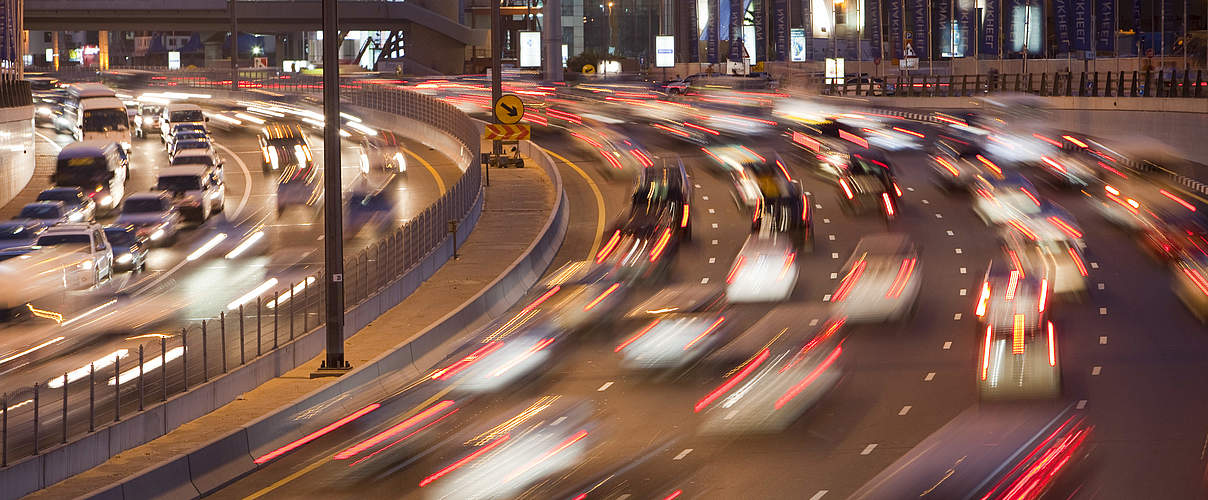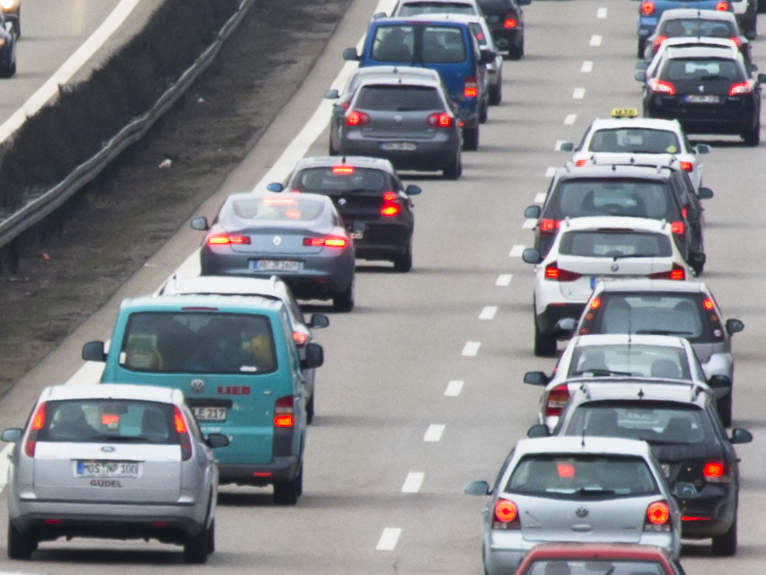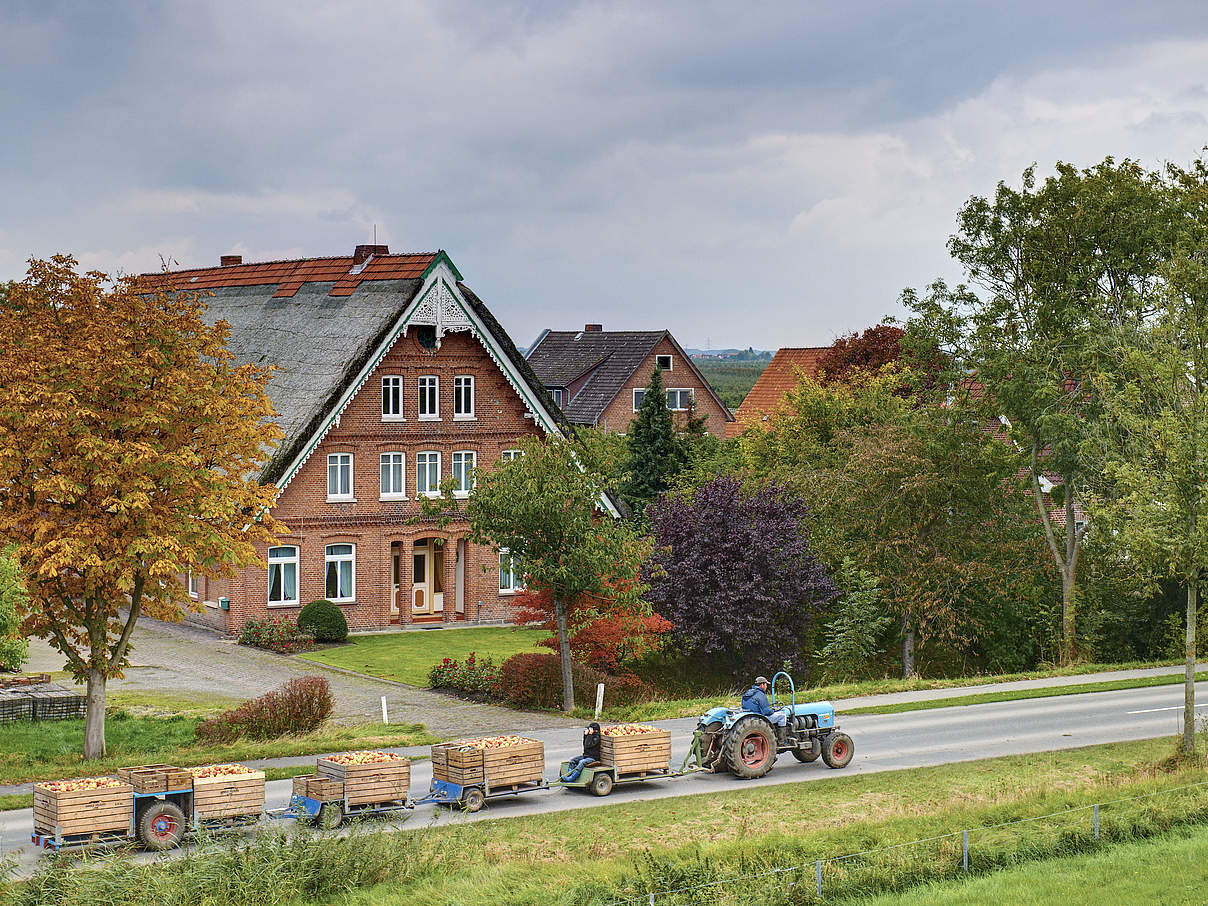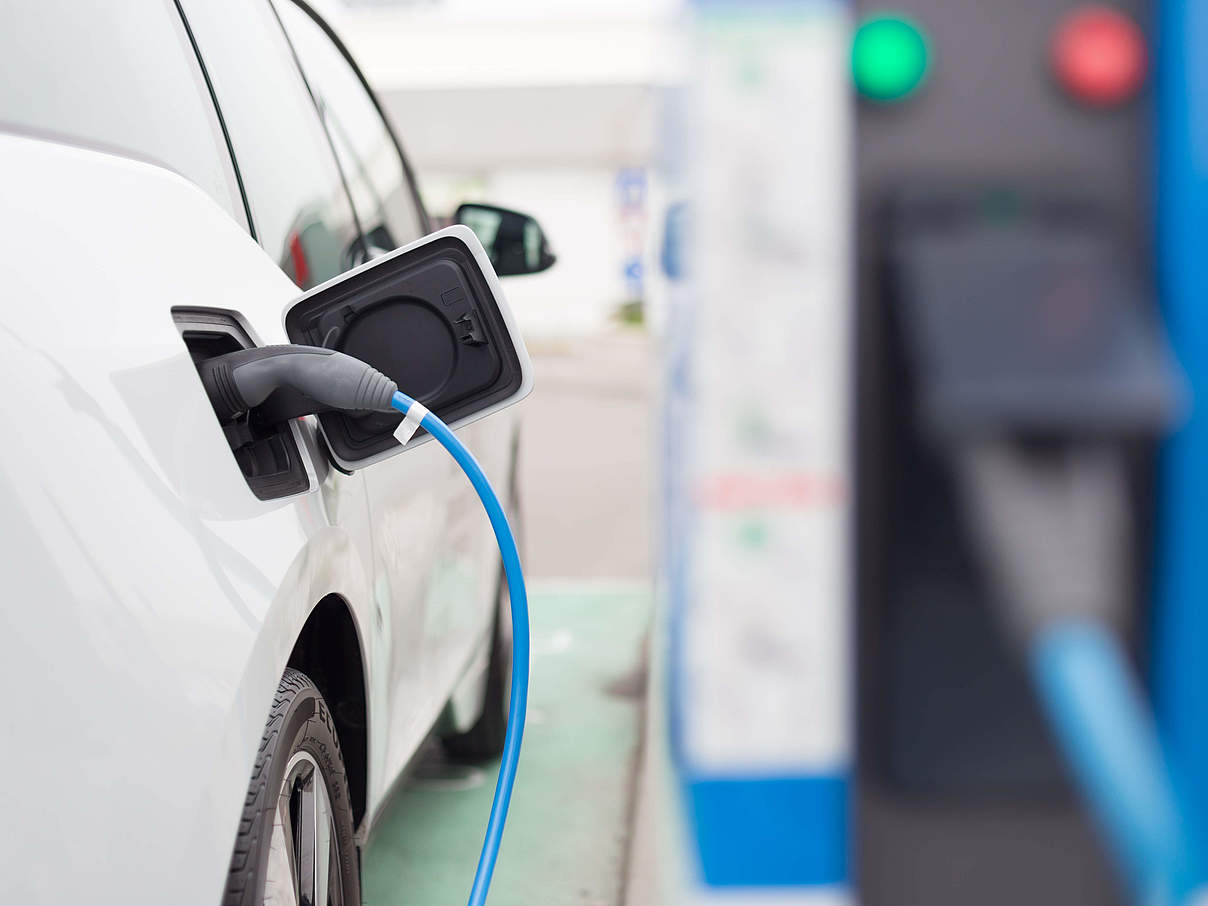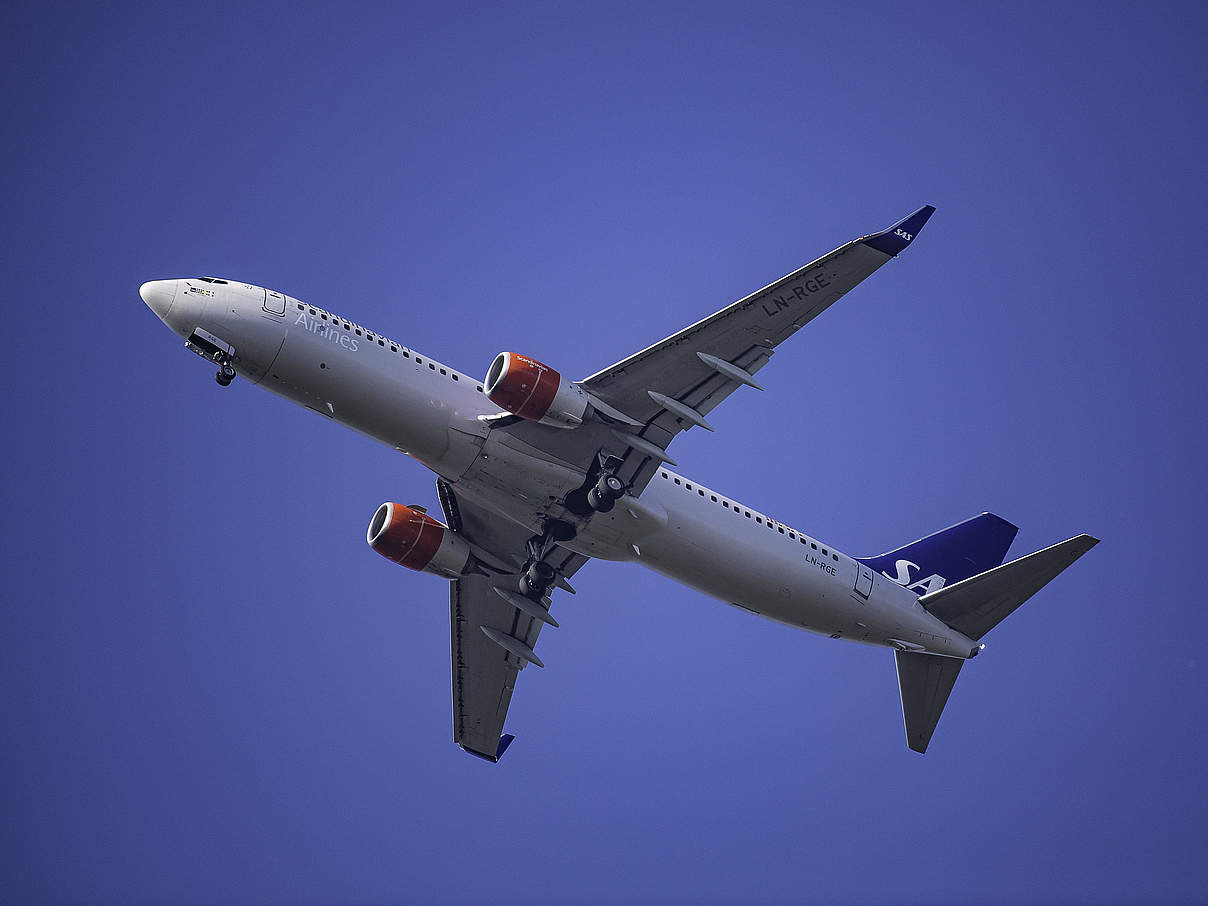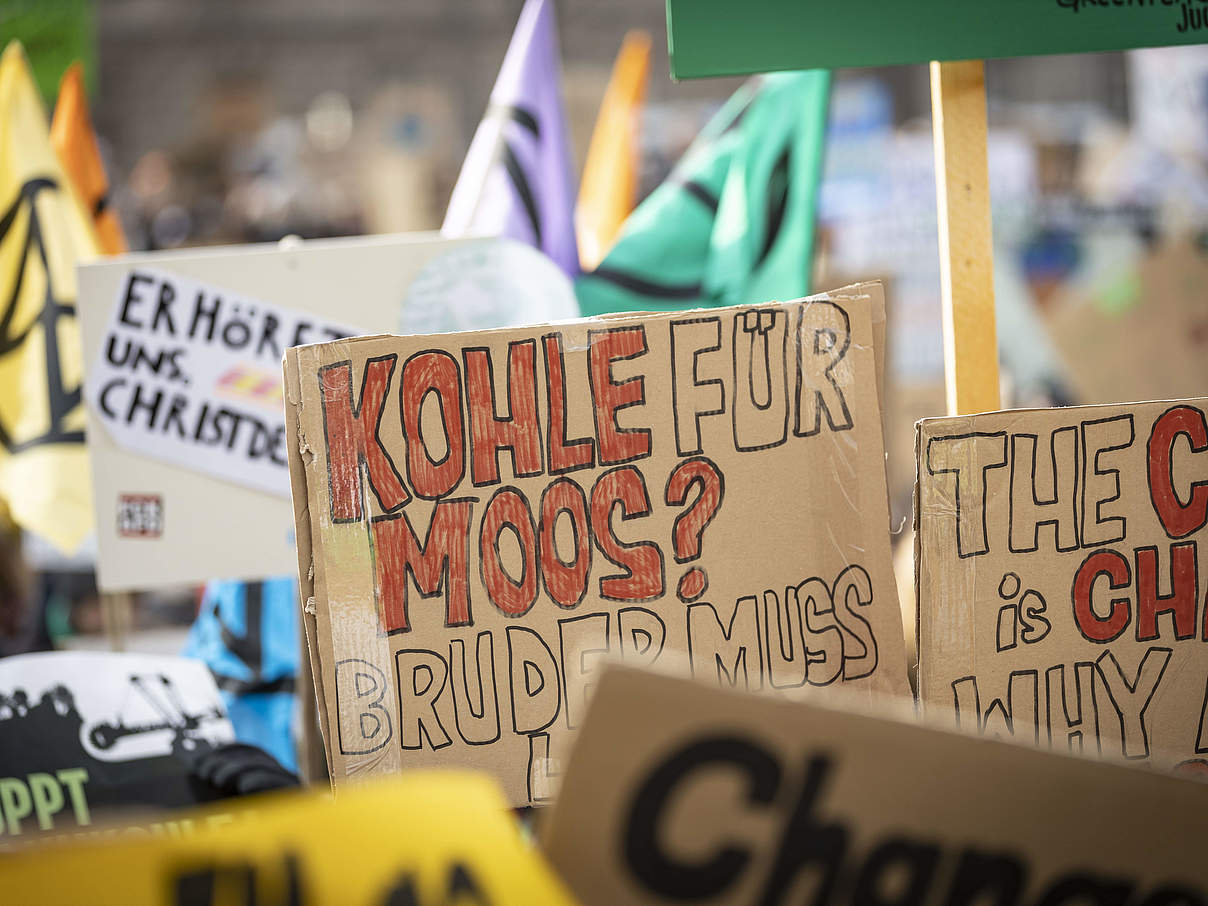Everyone can make a contribution to the mobility transition in their everyday life. From car to bike, from plane to train - our tips will make it easier to switch. You will also ensure better air quality, less noise, reduce your energy costs and do something for your health by switching to a bike.
Sustainable mobility in the city
Does it make sense to have your own car in the city?
Most people in the city are not necessarily dependent on their own car. Despite this, traffic jams roll along urban traffic arteries, parked cars take up enormous amounts of space in residential streets and literally create thick air in the evening traffic.
A third of all journeys made by car are less than three kilometres long, half are less than five kilometres. Distances that only take a quarter of an hour to cover by bike. Even if it is tempting to simply get into the car: It's best to make a habit of travelling shorter distances on foot, by bike or by public transport.
Less traffic jams thanks to car sharing
Each car costs society between 4,000 and 5,000 euros a year due to air pollution, space consumption and accidents. That's why the best environmental protection measure is to get rid of private cars altogether.
Most cities now have excellent car-sharing providers where you can quickly access a car in your neighbourhood via an app. Even if the cost of a journey initially seems higher, you save on the purchase price, depreciation of the car, repair costs and possibly parking fees for a parking space.
Better air and more exercise with the cargo bike
Taking the children to nursery, doing the bulk shopping or travelling into the countryside at the weekend - you can do this in an energy-saving and climate-friendly way with an electric cargo bike. Some federal states subsidise the purchase of a cargo bike or the removal of your car with a bonus or offer sharing models for cargo bikes.
Incidentally, e-scooters, which can be rented at the roadside in many cities via an app, are not currently a sustainable component of a genuine mobility transition: Their batteries often only last a few months before they become e-waste. In addition, they often end up in bushes or lakes and block the already narrow traffic space on footpaths and cycle paths.
Creative mobility concepts in the countryside
While you can easily get around in the city without a car, the situation in many rural areas is not so good. There is no railway line, the bus runs far too rarely or not at all, and the distances are too great for cycling. However, initiatives aimed at improving the collective rural transport infrastructure are springing up like mushrooms.
Simply call the bus or start a car-sharing initiative
Many regions neglected by public transport have at least one on-call bus. A quick call about two hours before the scheduled departure brings the bus to the next stop.
Some municipalities have also initiated car-sharing models in rural areas. Such models are often still in their infancy and can use all the support they can get. Find out more, simply try out car sharing or get involved in a mobility revolution in your municipality yourself.
Talk to your neighbours in the village about sharing cars or set up a mobility messenger group with people from nearby villages. This way, you can quickly and easily arrange carpooling opportunities, reduce greenhouse gases, share costs and have fun chatting with each other instead of sitting alone in your car.
Reaching your destination by cargo bike and carpooling bench
The purchase of an e-bike or electric cargo bike can also be worthwhile in the countryside. Distances that were previously too strenuous with a simple bicycle can now be travelled effortlessly, and every car journey replaced saves costs and CO2.
Many villages now also offer so-called car-sharing benches where you can hope for a lift. These benches certainly don't play a major role in everyday life and are more suitable for spontaneous journeys. But why not give a lift to someone who is hoping for a lift here? Perhaps this will lead to an exciting encounter?
If you can't do without your own car
It is not possible or practical for everyone to get rid of their car. But even if you can't do without your car, there are many small adjustments you can make to reduce greenhouse gases and costs.
Avoid short journeys by car: your car's fuel consumption is particularly high when the engine is cold. As the catalytic converter is not yet working, the pollutants escape unhindered into the atmosphere.
Climate-friendly driving style
Save fuel and greenhouse gases by driving with foresight, accelerating slowly and travelling at a constant speed that is not too high. Stay one vehicle length ahead of the federal government and enforce your personal speed limit: A maximum of 120 on motorways, 80 on country roads and 30 kilometres per hour in towns and cities. On-board computers that display the current fuel consumption can be helpful. Some driving schools, car clubs or car manufacturers offer courses on fuel-efficient driving.
Getting the vehicle into shape
What else you can do: Remove unnecessary loads, superstructures and roof racks if you don't need them. Check the tyre pressure: the fuel consumption of an average new car increases by five percent if the tyre pressure is 0.5 bar too low.
When buying a new car, do without unnecessary engine power and bulky metal monsters and switch to battery electric vehicles. Electric cars really come into their own when they can be charged with green electricity from your own photovoltaic system and serve as a mobile power storage unit.
However, land consumption, space requirements and the sealing of the landscape for car traffic create environmental problems that are not solved by electric cars.
Relaxed and climate-friendly to your holiday destination
Apart from bicycles and other means of transport that use your own physical strength, trains and buses have by far the best carbon footprint as a means of transport on holiday. Travelling by train is ten times more energy-efficient than flying and produces around five times fewer greenhouse gases. What's more, the CO2 emitted by aeroplanes has an even greater effect in the upper layers of the atmosphere than greenhouse gases emitted on the ground. This makes flying the most climate-damaging way to reach your holiday destination. Therefore, if possible, switch from aeroplanes or cars to buses and trains.
Discover more by train and bus
Most of Europe's natural gems and cultural sites can be easily reached by train. And when the journey becomes the destination, the slower journey doesn't have to be a disadvantage. Plan daytime stops and stopovers and be surprised by exciting places along the way. Many European metropolises are connected by night train routes that allow you to reach your destination while you sleep. These night train lines are set to be expanded in the coming years. If you have your car transported by car train or hire a car at your holiday destination, you will also be mobile at your destination.
The Interrail Pass, which is valid in 33 European countries, is not only attractive for young people and the over-60s, but is also often the cheapest ticket for everyone else and can also be used flexibly. With Interrail, for example, you can take five train journeys within a month whenever you want.
A climate-friendly holiday trip often requires some planning. You can find help from travel agencies that specialise in sustainable forms of travel.
Flying and offsetting
If you can't reach your destination any other way and still fly on holiday, then at least offset your CO2 emissions. You can use various providers to finance projects that save the amount of carbon dioxide released into the atmosphere by your flight elsewhere. But be careful: not all projects are trustworthy, they are pure greenwashing.
Fly half
As an introduction to the changeover, you can also try to only travel by plane on the way back from your holiday and take the train or bus on the way there. ‘Fly half as much’ saves the planet 50 per cent of the greenhouse gases otherwise produced by holiday flights.
Climate killer: cruise holidays
Only cruises are even more harmful to the environment than aeroplanes. They are not compatible with sustainable tourism and should therefore be taboo. The CO2 emissions and pollutant emissions are enormous, and the impact on people and the environment at tourist destinations is high. A fourteen-day cruise in the Mediterranean produces around four tonnes of CO2, almost half the amount of greenhouse gases that a person in Germany emits in a year. This means that cruises are real climate killers. If you prefer to spend your leisure time on the water, use the power of the wind on a sailing ship. You can experience so much more than on a floating castle of beds.
Sustainably mobile at work
Even if you have to travel a lot for your job, you can be mobile in a sustainable and climate-friendly way. The train is the best and most convenient alternative for journeys and meetings within Germany. Another advantage: you can use the journey time directly for work. If you need to be mobile at your destination, use DB Carsharing, a hire bike or buy a modern folding bike that you can fold up and transport as luggage on the train free of charge.
You can also save costs and greenhouse gases with a company bike or a company-subsidised season ticket for local public transport. Or maybe you don't travel at all? We have known since the coronavirus crisis that many meetings and conferences can also be successfully held online.
If you don't want everyone to be able to take a look at your home office, why not try these virtual backgrounds with great nature motifs?
Conclusion: making the mobility transition yourself
Cycling is fun and keeps you fit, travelling by train is convenient and climate-friendly. Changing your own mobility behaviour is often just a matter of habit, and once you have made the switch, you will hardly miss car or air travel. Twenty per cent of all greenhouse gas emissions in Germany in 2019 were attributable to the transport sector. In order to achieve the climate targets, emissions must be almost halved by 2030 compared to 1990.
Become part of the fossil-free and sustainable mobility transition yourself by starting with small changes in your everyday life and working with others to promote a climate-friendly transport sector.
